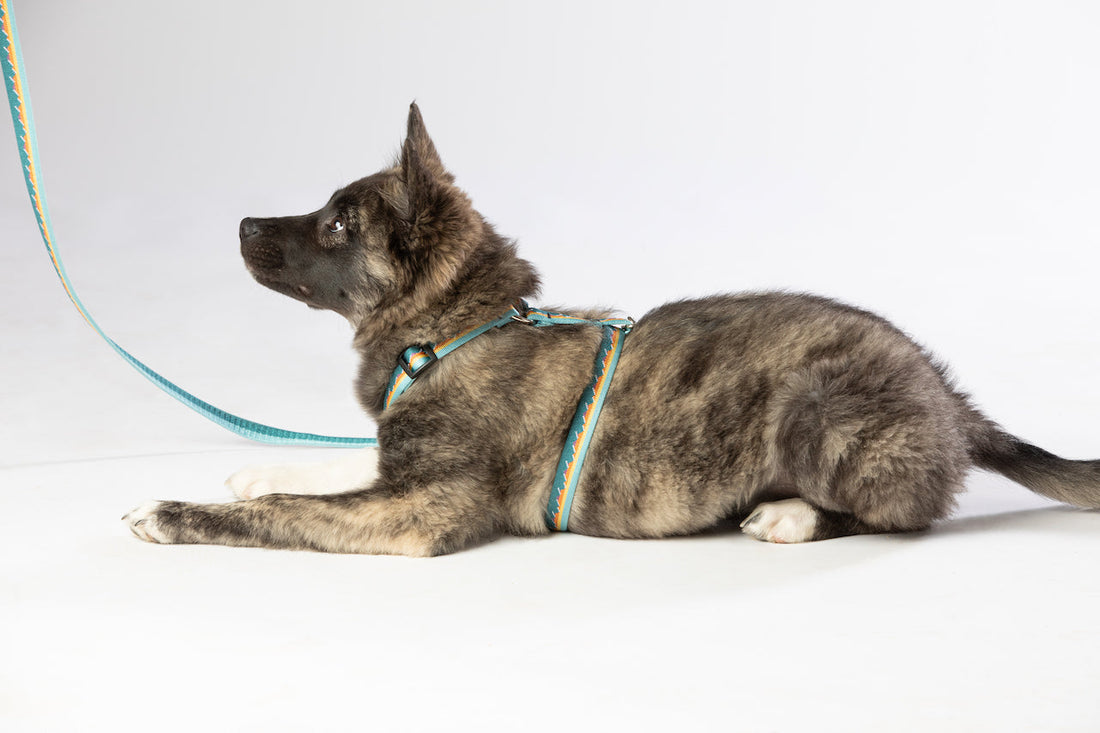
The Ultimate Guide to Understanding Dog Body Language: What Your Dog is Really Saying
Compartir
Decoding Your Dog’s Language: A Guide to Understanding Canine Communication
Dogs may not speak our language, but they’re expert communicators in their own right. From the direction of a tail wag to a subtle squint, every movement tells a story. Understanding your dog’s body language can help you build a stronger bond, prevent misunderstandings, and even avoid dangerous situations.
Let’s break down the key signals your pup is sending you every day!
The Tale of the Tail: It’s More Than Just Wagging
You might think a wagging tail means a happy dog - but that’s only part of the story. The position, speed, and direction of a wag can reveal a lot about how your pup is feeling.
🐕 Tail Position:
- High & Stiff – Confidence, dominance, or alertness
- Neutral – A relaxed, content dog
- Low or Tucked – Fear, submission, or anxiety
🐕 Wagging Speed:
- Fast Wagging – Excitement or agitation
- Slow Wagging – Caution or uncertainty
🐕 Wagging Direction:
- Right Bias – Positive emotions (like seeing their favorite human!)
- Left Bias – Stress, uncertainty, or a new, unknown situation
Science Behind It: A study in Current Biology found that dogs wag more to the right when feeling happy and more to the left when nervous.
Eyes: The Window to a Dog’s Soul
A dog’s eyes can tell you more than you think.
👀 Direct Eye Contact
- To humans: A sign of trust and affection (dogs increase oxytocin, the “love hormone,” when gazing at their owners).
- With other dogs: Can be a sign of challenge or aggression.
👀 Squinting or Blinking
- Often a sign of happiness or appeasement (“I’m friendly!”).
- A hard, unblinking stare can indicate a challenge or discomfort.
Raised Fur: What It Really Means
When the fur along your dog’s back stands up, it’s an involuntary response to intense emotion. But, raised hackles don’t always mean aggression - context matters!
🐾 Reasons for Raised Hackles:
- Excitement – Amped up from play or high energy
- Fear or Anxiety – Reaction to an unfamiliar or intimidating situation
- Aggression – A defensive or offensive response
So, always assess the entire body language, not just their raised back fur, to determine your dog’s emotions.
The Play Bow: A Universal Invitation to Fun
One of the most recognizable and important signals in dog behavior is the play bow - front legs stretched forward, chest lowered, and tail wagging.
🐾 Why Dogs Do It:
- It’s a clear invitation to play and signals that any rough behavior afterward is in good fun.
- Dogs will often do a "self-interrupt" to reset play if it gets too intense.
- It’s a way for dogs to say, "I’m friendly and ready to have fun!"
Even wolves use play bows in the wild to initiate and maintain social bonds.
The Evolution of Belly Rubs: Why Dogs Love Them
Ever wonder why dogs love belly rubs? It’s an evolutionary behavior rooted in trust.
🐕 Why Dogs Show Their Belly:
- Submission: In wild canines, showing the belly signals "I’m not a threat."
- Trust: Domestic dogs expose their belly to humans as a sign of affection and comfort.
- Learned Behavior: When humans reward belly rubs with affection, dogs reinforce the behavior.
Some dogs enjoy belly rubs more than others - so always read their body language to see if they’re truly comfortable!
How Dogs Communicate with Each Other
Dogs communicate with a rich social language, often misunderstood by humans.
🐾 Common Canine Interactions:
- Greeting Rituals – Dogs sniff each other to gather information.
- Tail Language – Relaxed tails = friendly; stiff or high tails = alertness.
- Role Reversal in Play – Dogs switch between “chaser” and “being chased” to keep play fair.
By understanding these interactions, we can prevent misunderstandings at the dog park and ensure positive social experiences for our pups.
Why Understanding Dog Body Language Matters
Recognizing your dog’s signals is key to a healthy, happy relationship.
✔ Prevent Miscommunication – Misreading signals can lead to stress or aggression.
✔ Enhance Training – Training is more effective when you understand your dog’s emotions.
✔ Strengthen Your Bond – When you “speak their language,” your dog trusts you more.
Dogs have spent thousands of years evolving to communicate with humans. By learning their signals, we can better care for them, train them more effectively, and build deeper connections.
Final Thoughts
Understanding dog body language isn’t just about preventing bad behavior - it’s about strengthening your relationship. From a subtle squint to a full-body play bow, every gesture tells a story.
Next time you see your dog wagging their tail or offering their belly, you’ll know exactly what they mean!
🐶 Want more dog behavior insights? Sign up for our emails for more tips and check out our latest dog-friendly products to make every adventure with your pup stress-free!







